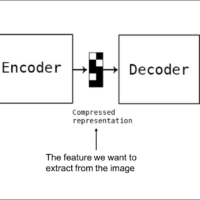Advanced Learning Rate Scheduling Methods for Machine Learning: Learning rate scheduling is critical in optimizing machine learning models, helping them converge faster and avoid pitfalls such as getting stuck in local minima. So far in our pervious days articles we have explained a lot about optimizers, learning rate schedules, etc. In this guide, we explore three key learning rate schedules: Exponential Decay, Cyclic Exponential Decay (CED), and 1-Cycle Scheduling, providing mathematical proofs, code implementations, and theory behind each method. 1. Exponential Decay Learning Rate Exponential Decay reduces the learning rate by a factor of , allowing larger updates early in training and smaller, more refined updates as the model approaches convergence. Formula: Where: is the learning rate at time step , is the initial learning rate, is the decay rate, controlling how fast the learning rate decreases, represents the current time step (or epoch). Mathematical Proof of Exponential Decay The core idea of exponential decay is that the learning rate decreases over time. Let’s prove that this results in convergence. The parameter update rule for gradient descent is: Substituting the exponentially decayed learning rate: As , the decay factor , meaning that the updates to become smaller and smaller, allowing the model to settle into a minimum. TensorFlow/Keras Implementation: PyTorch Implementation: MLX Implementation: 2. Cyclic Exponential Decay (CED) Cyclic Exponential Decay (CED) extends the exponential decay by adding a periodic component to the learning rate. This allows the model to escape local minima by periodically increasing the learning rate. Formula: Where: is the cycle length, is the decay rate. Mathematical Proof of Cyclic Exponential Decay The cyclic component of CED ensures periodic exploration of the parameter space, while the exponential decay guarantees eventual convergence. The cosine term introduces cyclic behavior into the learning rate, allowing it to increase periodically: The learning rate still decays over time due to the term, but the periodic oscillations prevent the optimizer from settling into local minima too early. PyTorch Implementation: MLX Implementation: 3. 1-Cycle Learning Rate Scheduling 1-Cycle Scheduling is a powerful technique that increases the learning rate in the first half of training and decreases it in the second half. This helps the model explore the parameter space early on and converge smoothly later. Formula: Where: is the total number of iterations. Mathematical Proof of 1-Cycle Scheduling The 1-Cycle method is based on the idea that increasing the learning rate early in training allows the model to explore the parameter space, while decreasing the learning rate later encourages the model to converge smoothly. During the first half of training, the learning rate increases linearly: This encourages larger parameter updates, which helps the optimizer escape local minima. During the second half, the learning rate decreases linearly: This fine-tunes the model as it approaches a solution, ensuring smoother convergence. PyTorch Implementation: Conclusion Exponential Decay: This schedule reduces the learning rate by a constant factor over time, allowing for larger updates during initial training phases and progressively smaller, more refined updates as the model converges. It’s particularly effective for models with stable loss surfaces, facilitating smooth and gradual convergence. TensorFlow Cyclic Learning Rates (CLR): CLR involves varying the learning rate between two boundaries in a cyclical manner, rather than monotonically decreasing it. This approach enables the model to periodically explore new regions of the parameter space, helping it escape potential local minima. The cyclical pattern ensures that, over time, the learning rate oscillates, promoting both exploration and convergence. arXiv 1-Cycle Scheduling: This method increases the learning rate to a maximum value during the first half of training and then decreases it in the second half. This strategy allows the model to explore a wide range of parameter values early on (enhancing exploration) and then fine-tune its parameters as training concludes (enhancing exploitation). It’s particularly beneficial for large datasets and complex models, striking a balance between rapid learning and precise convergence. DeepSpeed Each method can be implemented across various platforms, including TensorFlow, PyTorch, and MLX for Apple Silicon. Selecting the right learning rate schedule is critical to achieving fast and stable convergence in your machine learning models. Comparison of Learning Rate Scheduling Methods Learning Rate MethodPurposeFormulaStrengthsPlatform ImplementationsHow to Decide Which to UseExponential DecayGradual convergence with decreasing updates over time.Ensures smaller updates as training progresses; works well for stable, smaller models.TensorFlow, PyTorch, MLXBest for stable, smaller models with smooth convergence needs. Use when you need a consistent, gradual reduction in learning rate for fine-tuning.Cyclic Exponential Decay (CED)Combines exponential decay with periodic increases to escape local minima.Periodically increases the learning rate, helping escape local minima and explore the parameter space more thoroughly.PyTorch, MLXIdeal for non-convex optimization problems, where the risk of getting stuck in local minima is high. Good for more complex models or rugged loss surfaces.1-Cycle SchedulingExplores parameters early in training and refines solutions smoothly in the second half. Balances exploration and refinement, making it especially…




